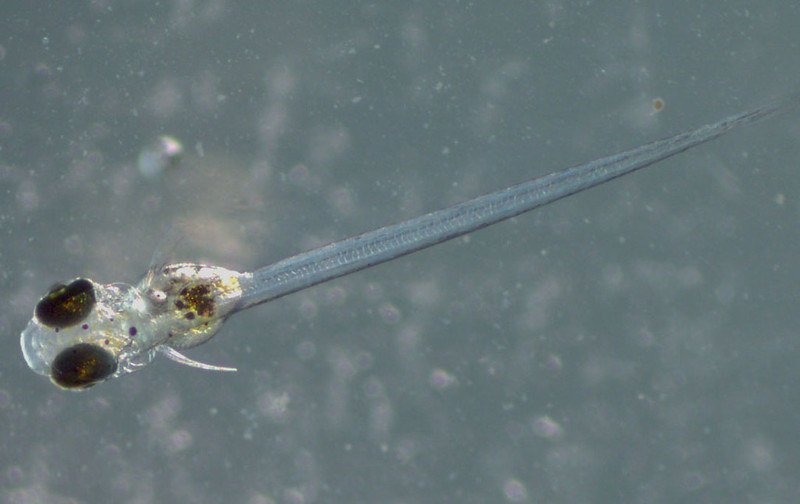OSU study: Low levels of harmful chemicals found in 3 generations of fish

CORVALLIS, Ore. (KTVZ) – Fish exposed to very low levels of chemicals commonly found in waterways can pass the impacts on to future generations that were never directly exposed to the chemicals, according to Oregon State University researchers.
“What that gets at is something your grandparents may have come into contact with in their environment can still be affecting the overall structure of your DNA in your life today,” said Kaley Major, a postdoctoral scholar at Oregon State and lead author of the paper published today in the journal Frontiers in Marine Science.
The study focused on synthetic (man-made) endocrine disrupting chemicals, which mimic the body’s hormones. They are found in many household and industrial products including flame retardants, food, toys, cosmetics and pesticides. Previous research has shown exposures to the chemicals can lead to altered sex ratios, lower fertility rates and deformities in fish.
Endocrine disruptors can cause adverse biological effects in other animals, including humans, by altering natural hormones in the body that are responsible for development, behavior and fertility. Past research done elsewhere has shown that those adverse alterations in humans can be passed to future generations.
“It’s really important to understand how animals can deal with stress in the environment, particularly when we are introducing new strssors on a daily basis,” said Susanne Brander, an assistant professor and aquatic toxicologist in OSU’s Department of Fisheries and Wildlife with whom Major worked.
“Our research helps show what animals do to respond to these changes and how quickly they can respond to them. That’s going to help us understand our impact on the environment in the long run.”
The researchers conducted the study with inland silversides, a fish found in estuaries that averages about 4 inches in length and is native in eastern North America and the Gulf of Mexico. They have also been introduced in California. They primarily feed on zooplankton and are an important prey species for birds and commercially valuable fish.
Previous research had shown negative impacts on fish exposed to high levels of endocrine disruptors, but little is known about fish exposed to low levels of the chemicals, Major said.
In the experiment, the inland silversides were exposed to the equivalent of a few drops of each endocrine disruptor in an Olympic-size swimming pool. The researchers studied three generations of fish over 21 months to see if the effects of endocrine disruptor exposure only to the parents were passed from generation to generation.
The experiment focused on methylation, a process by which a set of carbon and hydrogen atoms known as a methyl group is added to a DNA molecule. Methylation can be tracked and can be an important indicator of how an organism will develop.
Previous research with mammals and other species of fish has found that endocrine disruptors impact methylation. That led Brander, Major and their collaborators to wonder whether endocrine disruptors, particularly low concentrations, would impact methylation in fish that live in estuaries, ecosystems which are important for biodiversity and often impacted by nearby urban areas.
The results were surprising, the researchers said. They found consistent patterns of methylation across the three generations of fish they studied, even though only the first generation was exposed to endocrine disruptors for a few weeks in early life.
The researchers believe the methylation patterns they observed across the three generations may influence expression of genes associated with the skewed sex ratios, reduced hatching and developmental defects observed by Ph.D. student Bethany DeCourten as part of the larger study. Future research will help the scientists understand more about what the methylation markers mean and what that says about how pollutants may affect evolution of inland silversides.
In addition to Brander, who is also part of the Coastal Oregon Marine Experiment Station, Major and DeCourten, authors of the paper were Jie Li, Monica Britton, Matthew Settles and Richard Connon, all of the University of California, Davis; and Alvine Mehinto of the Southern California Coastal Water Research Project.
The study was funded by the Environmental Protection Agency, California Department of Fish and Wildlife and the Delta Stewardship Council.